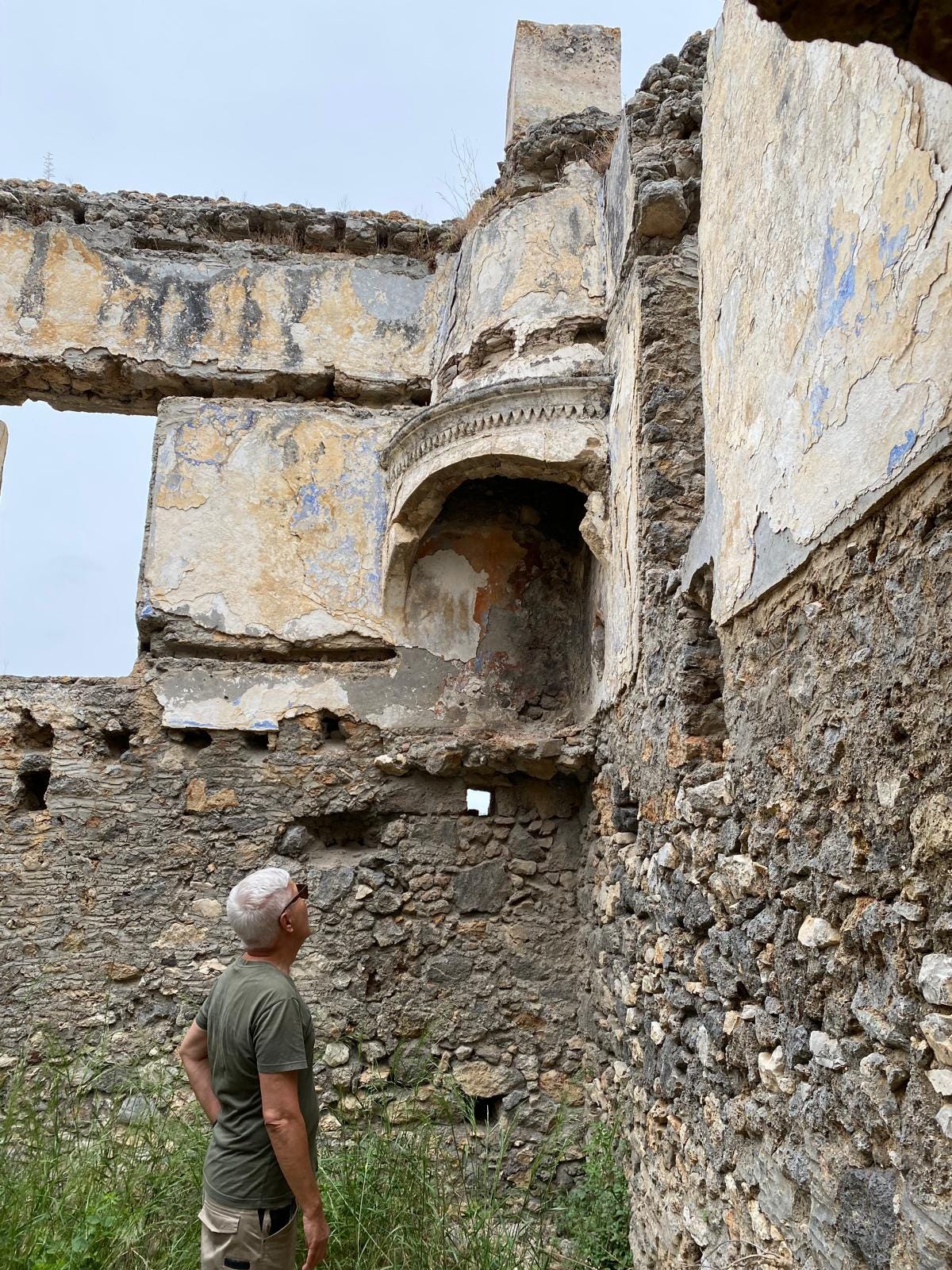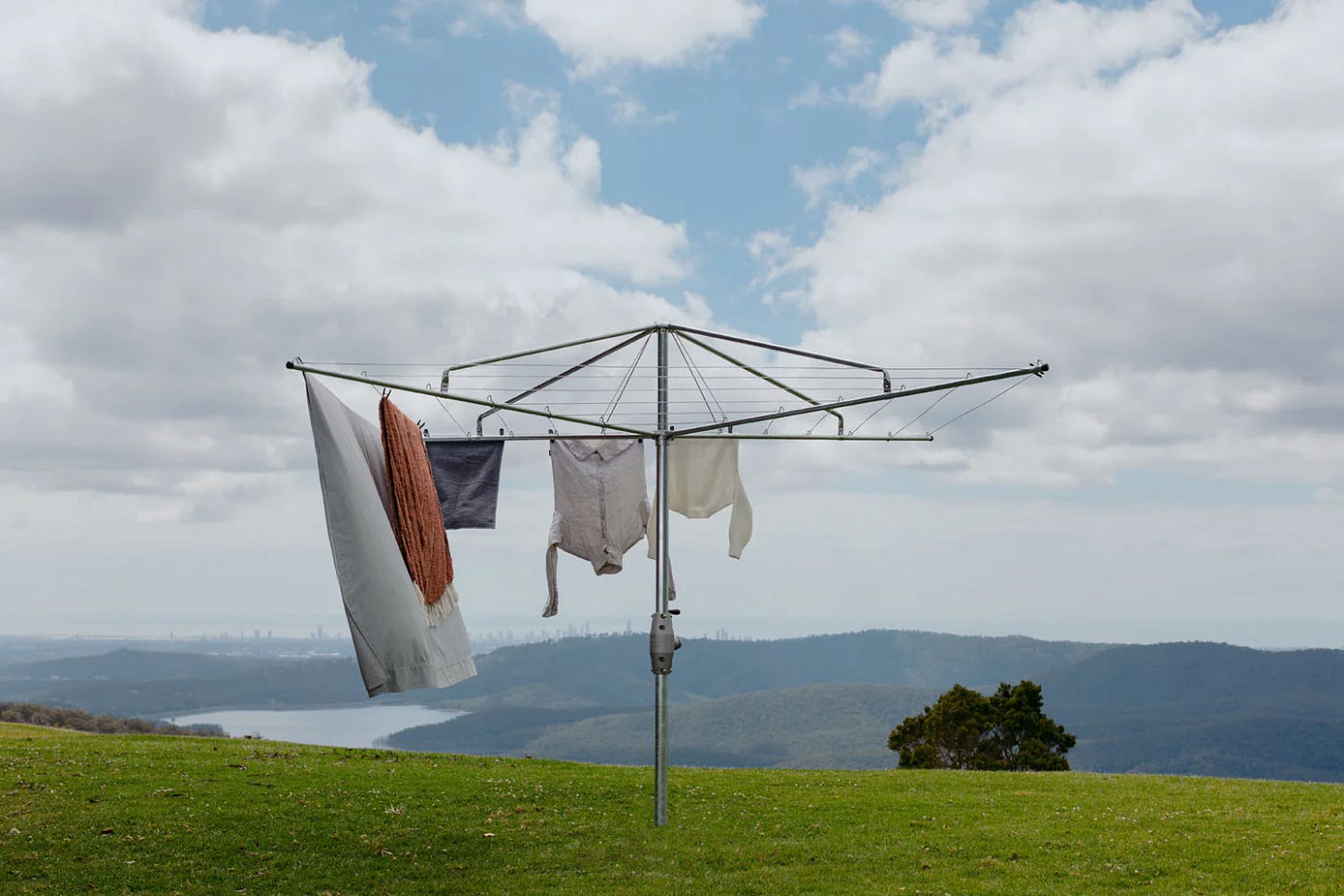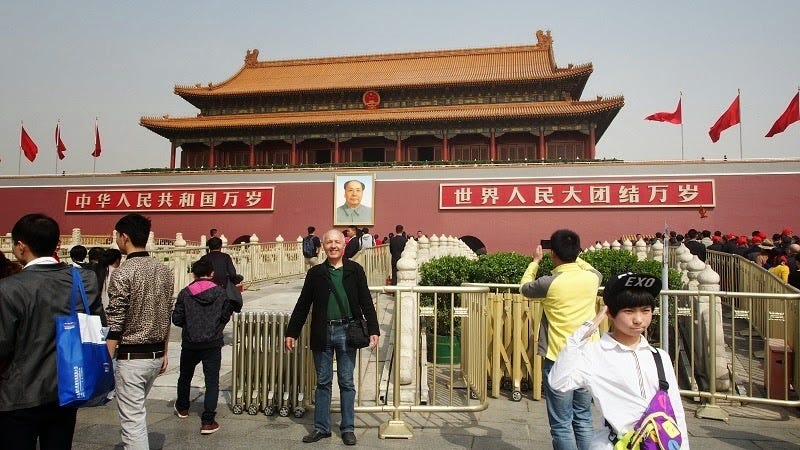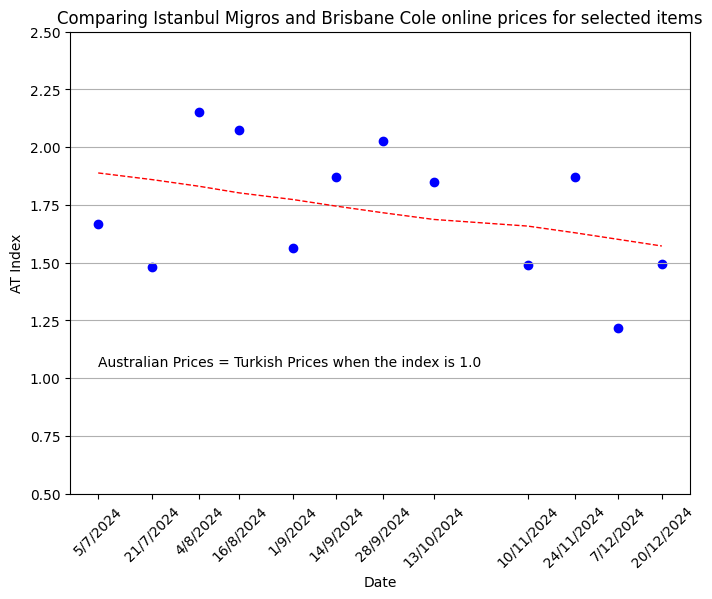If you like what you read, copy and share the link, post it on another platform.
Please also subscribe to make sure you will not miss future posts. Subscription is free. Your email will not be used for other purposes. You will receive no advertisements.
-+-+-+-+
Personal Journey through the year
The first post of 2024 reflected on my retirement and offered insights for those already retired or considering it. It was a chance to share my thoughts on this chapter of life. I also had a minor surgery in January 2024, repair of inguinal hernia.
On 26 February 2024, I reminisced about my student years, revisiting memories from both my undergraduate and postgraduate days. If you’re curious about how literature searches were conducted in the 1970s compared to today, it’s worth a read. For those around my age, it might even be a nostalgic trip down memory lane.
When you’re in your twenties, life feels like an endless ocean to swim through. Even the tough times seem valuable because you believe that what doesn’t kill you will only make you stronger. Thinking about your far future, if at all, is like peering through the wrong end of binoculars—everything seems so distant and unreal. But this is precisely the time to start laying the foundations for a healthy lifespan.
On 19 August 2024, I took a deep dive into this topic. That post explored how, regardless of race or nationality, all humans age at the same rate. The difference lies in how fast our health deteriorates, which determines when we die. While genetic factors play a role, they only account for about 20-25%. The real determinant is your lifestyle—most people die because they run out of “credits” in their health bank. The takeaway? Start making those deposits early in life.
Since I don’t want to keep posting about health topics on the main page, I’ve started a Substack chat where I share readings and experiences related to health and well-being. It’s not very active right now, but it might be worth keeping an eye on if you’re interested.
Maybe none of this really matters—perhaps it’s all a dream. Maybe we’re all living inside an elaborate computer simulation, our existence nothing more than a dream within a dream. I explored this idea in my 16 September 2024 post. It is intriguing to see how so many people are drawn to it. One might call it a religion of the modern times.
Finally, on 3 November I wrote that the technology will probably be available soon that makes it possible for me to leave an out-of-ordinary souvenir to my grandchildren Eleanor and Hugo and their descendants.
In ten years, there may be commercial services that will help me create a software avatar that, on the screen, will look like me, talk like me and think like me. It would “live” indefinitely as software, available to chat with my great-grandchildren—or even their great-grandchildren, if they were curious. I present a recording of an imaginary conservation between the avatar and Hugo’s grandchild in my 3 November post.
Australian Affairs mentioned in my 2024 Posts
Looking back on my posts this year, I noticed that I didn’t write much about Australia. Perhaps that’s because not much is happening here. I could mention my post on the Queensland state elections, but let’s be honest—you probably wouldn’t care. Even in Queensland, not many people seem to care about the elections. Tranquillity may be boring, but it’s not necessarily a bad thing. In fact, it seems to be valued by the global cognoscenti. Only six weeks ago, on 3 November 2024, we learned that Melbourne and Sydney were ranked among the top nine most liveable cities in the world. Switzerland was the only other country with two cities on the same list.
This reminds me of the Orson Welles joke in the film The Third Man (1949): “In Italy, for 30 years under the Borgias, they had warfare, terror, murder, and bloodshed, but they produced Michelangelo, Leonardo da Vinci, and the Renaissance. In Switzerland, they had brotherly love—they had 500 years of democracy and peace, and what did that produce? The cuckoo clock.”
I suppose Australia has its own claim to invention in times of peace: the Hills Hoist
If paying university administrators obscenely high salaries improved a country’s scientific performance, Australia would surely be leading the world. As I noted in my 25 November post, Australian university leaders are among the highest-paid globally—even those heading universities teetering on financial insolvency.
That said, I must give credit where it’s due. In my 8 December post, I reported that my university—and specifically my School—did exceptionally well in the Shanghai Global Rankings this year, outperforming any other Australian university and placing within the top 50 globally.
Finally, you’ll find mentions of Australia and Brisbane scattered throughout the “Diary” section of every post. These entries document my walks, the fruits and produce I enjoy, and are often accompanied by photos. Some readers have told me they might skip my more “serious” content but never miss the diary notes.
Affairs of Türkiye mentioned in my 2024 posts
The existential threat for Türkiye
I’ve written regularly about water scarcity as an existential crisis for Türkiye. Sometimes, it feels like I’m the only one who worries about it, as even the universities in Türkiye seem to ignore the issue. Osman Orhan of Mersin University is a rare exception. On 28 January 2024, I reported on his alarming study about Türkiye’s water resources. Unfortunately, most Turkish intellectuals seem to spend their time and energy on futile political discussions instead of tackling urgent challenges like this.
Geopolitics
On 12 February 2024, news broke that a Sinn Féin member had become the First Minister of Northern Ireland. This got me thinking about the possibility of peace with the PKK in Türkiye. In my post, I reflected on how Northern Ireland found an overlap between conflicting visions, and a peace agreement was built on that common ground. The question remains: can a similar overlap of sufficient size be found in Türkiye?
On 10 April 2024, I explored Türkiye’s geopolitical trajectory in a multipolar world. I argued that in the evolving global order, Türkiye is shaping up to be the dominant power in the Near East.
Türkiye’s relationship with Israel also came under the spotlight in my posts. Historically, Türkiye abstained from voting on the UN partition plan for Palestine in 1948. Despite this, the two countries maintained friendly relations until the rise of Netanyahu’s governments. The collapse of the Assad regime in Syria could create an opportunity for closer cooperation between Türkiye and Israel—a win-win scenario for both nations. On 24 October 2024, I wrote about Israel’s progress since 1948 and how precarious its future may become with the U.S. retreating from the region. Among Middle Eastern nations, Türkiye and Israel share the most similarities in terms of their populations’ lifestyle choices. Closer ties could enhance the security of both.
Türkiye is also becoming increasingly assertive against Russia. On 12 February 2024, I wrote that this might partly be due to Türkiye’s role as a key hub for Russian crude oil and refined products, following EU and G7 sanctions on Moscow’s oil trade. At that time, Türkiye was the third-largest recipient of Russian crude after India and China, and the biggest market for Russian refined products. However, I suspect there are deeper, more fundamental reasons for Türkiye’s assertiveness, though I don’t yet have reliable information to elaborate on this.
Travelling to Turkey
From the end of April to June, Meliz and I were in Istanbul. My first two posts from Istanbul (30 April and 7 May) were like travel notes, recounting our early experiences. The 11 May post was dedicated to a memorable dining experience we had at Turk Fatih Tutak, a fine-dining restaurant in Bomonti, Istanbul.
The main reason for our trip was a class reunion in İzmit, which I wrote about in my 17 May post.
May Day in Istanbul was also interesting to observe. The Erdoğan government seems keen to reduce political discourse to mere symbols, and surprisingly, the opposition plays along.
Before returning to Brisbane, we spent a week in Ölüdeniz, a breathtaking spot on Türkiye’s Mediterranean coast. Ölüdeniz is a historically and environmentally sensitive area, as well as an earthquake zone. Strict building codes ensure there are no tall buildings, preserving the village’s small-town charm. The final post from our Turkish trip, written after our return to Brisbane, focused on Kayaköy (Rock Village). Just 9 km from Ölüdeniz, Kayaköy was home to 6,000 people in 1923. Today, it is a hauntingly beautiful ghost town.

Turkish Inflation
In spite of Türkiye’s high inflation rate, I noted in April 2024 that Istanbul real estate prices remained well below those of comparable cities like Geneva, Madrid, Dubai, and Mumbai. However, when we arrived in Türkiye at the end of April, the impact of inflation was clear. From the cab fare at the airport to everyday expenses, prices seemed to have increased tenfold compared to four years ago. This equates to an annual inflation rate of 78% (1.78⁴ ≈ 10).
In Ölüdeniz, I observed that even European visitors were surprised by how Turkish prices now compare to those in their home countries.
In July, I introduced a new section in my blog, comparing the prices of selected items in Türkiye and Australia. Using online prices from Migros in Istanbul and Coles in Brisbane, I track the cost differences between the two countries.
The ROGUE Era Posts
ROGUE is an acronym I coined in September 2023 to describe the current age: Renaissance On Globe with Upheavals Everywhere. Since then, I’ve continued writing about the defining features of this era of unceasing turmoil.
On 11 March 2024, I identified four key reasons for the growing social unrest in the Western world:
Information overload (manifested most prominently through social media),
The global redistribution of industrial jobs,
The erosion of middle-class stability (a direct consequence of job redistribution), and
Dissent among the ruling elites.
Technological Progress in the ROGUE Era
One defining feature of the ROGUE era will be rapid technological progress. This is desperately needed, as global wealth, despite increasing manyfold since the Industrial Revolution, has stagnated over the past 50 years.
On 23 July 2024, I explored why technological progress has stalled for so long and why I believe we’re on the brink of a new surge. Interestingly, it’s not just AI developments that give me hope—though AI is certainly in the spotlight. In fact, I’m more pessimistic than most about AI’s potential. I don’t believe scaling alone is the key to unlocking breakthroughs, nor do I think AGI (artificial general intelligence) is coming anytime soon.
The Decline of US Power
A critical characteristic of the ROGUE era is the rapid decline of U.S. power. This decline is evident not only in global metrics but also within the U.S. domestic economy and quality of life.
For example, in my 4 August 2024 post, I pointed out that the U.S. spends the highest per capita on healthcare but achieves the worst outcomes among its peers. Six weeks before the U.S. presidential election, I argued that despite his many flaws, voters might favor Trump simply because they don’t see him as part of the political circus responsible for America’s post-Soviet decline.
The Paradox of Global and National Inequality
A perverse consequence of the ROGUE era is that while inequality between nations is decreasing, income inequality within nations is worsening. On 23 July 2024, I shared a chart comparing inequality across countries. South Africa and Brazil stood out as the most unequal nations, while Australia fared better than most, and Türkiye fell somewhere in the middle. The troubling trend is that income inequality within nations has grown substantially over the last 15 years.
Winners and Losers in the ROGUE Era
The ROGUE era benefits countries that adapt to new global conditions but is disastrous for those clinging to outdated strategies. Venezuela is a striking example of this failure. Despite its ample petroleum resources, it remains an economic basket case, as I detailed in my 4 August post.
Meanwhile, the global investment community continues to place remarkable trust in the U.S. stock market, despite the country’s economic woes. On 2 September 2024, I noted that while the U.S. produces less than 18% of the world’s total economic output, its stock market accounts for roughly 70% of global market capitalization. This suggests investors believe U.S. companies can generate three times more revenue for the same investment compared to companies in other countries.
China’s Challenges
While the U.S. faces serious headwinds, its primary competitor in the ROGUE era—China—is also struggling. On 3 November 2024, I wrote about some of the significant challenges China faces today. The silver lining? These challenges may make China seem less threatening to U.S. war hawks eager for confrontation.
Energy Technologies for the Future
Hydrogen Energy: Still a Dream?
On 15 January 2024, I wrote about ACES Delta, a U.S.-based joint venture, importing Chinese electrolysers for its green hydrogen project. The efficiency I estimated for these electrolysers was just 55.6%. As I pointed out at the time, if this is the state of the art in electrolyser efficiency, the much-hyped hydrogen energy revolution will remain little more than a dream.
Despite the significant hype surrounding hydrogen—especially in Australia, as promoted by the former Commonwealth Chief Scientist—only 7% of announced hydrogen projects have survived to reach the final investment decision (FID). The main obstacle? Cost.
One way to improve hydrogen’s prospects is by leveraging its higher flame temperature to develop high-efficiency heat engines. However, this approach requires advanced materials capable of withstanding extreme temperatures, and progress in this area has been slow as I noted on 19 June 2024.
Renewed Interest in Geothermal Energy
Throughout 2024, there’s been growing interest in deep geothermal energy, particularly in the U.S. On 10 April, I wrote about Fervo Energy’s success in reducing well-drilling costs to $4.8 million per well—half of what they were 20 years ago when I was involved in deep geothermal energy conversion. On 2 September, I noted that deep geothermal now has PPAs (power purchase agreements) for two plants with a combined capacity of 470 MWe. This renewed focus on geothermal energy could play a role in diversifying future energy sources.
China’s UHVDC Transmission Lines: Lessons for Australia
On 8 July 2024, I wrote about the world’s longest ultra-high voltage direct current (UHVDC) electrical transmission line, built in China at the astonishingly low cost of $1.8 million per kilometer. This line transmits 12,000 megawatts of electricity. If similar costs were achievable in Australia, it would make perfect sense to build massive solar farms in the interior and power coastal population centers. Unfortunately, things cost far more in Australia.
For example, on 2 September, I wrote about the cost blowout of Queensland’s CopperString project, which is now estimated to cost 30 times more than China’s UHVDC lines on a $/MW/km basis.
China’s UHVDC infrastructure enables it to transmit electricity from solar farms in its western regions to consumption centers in the east. This is a key reason why China leads the world in renewable energy. In 2023, 63% of new global renewable energy capacity was installed in China, which remains the undisputed leader in installed solar capacity.
Dutton’s Nuclear Power Proposal for Australia
On 19 June 2024, Peter Dutton, leader of the Australian Opposition, announced that if his party wins the next election, the government will build large nuclear power plants (NPPs) at seven existing coal-fired power plant sites.
In my 8 July post, I examined this proposal and concluded that it doesn’t make commercial sense unless we fundamentally change the structure of the Australian power grid. I would actually welcome such a change. I would even support an expensive nuclear option if it’s the price we need to pay to escape the Thatcherite straitjacket we imposed on ourselves in the 1990s.
Developments in Nuclear Power Technology
While there have been some interesting developments in nuclear power technology internationally, none have managed to produce a working commercial plant yet:
• Westinghouse’s eVinci: Westinghouse is attempting to package its eVinci microreactor as a product for the small non-utility generator market. I believe this is a strategic mistake, as Westinghouse lacks experience in this sector.
• Small Modular Reactors (SMRs): Despite significant hype, SMRs have yet to deliver on their promise. Many projects are failing halfway through. For instance, in November 2023, I wrote about the termination of NuScale’s UAMPS project due to cost overruns. Almost exactly a year later, on 3 November 2024, another SMR favorite, Ultra Safe Nuclear Corporation (USNC), filed for Chapter 11 bankruptcy.
• Natrium Reactor: On 8 July 2024, I wrote about the Natrium reactor, a promising concept being developed by a consortium supported by Bill Gates. If completed and successful, it could be a breakthrough. However, it remains to be seen whether the project will reach the finish line and perform as intended.
Books I read
Odds and Ends from Past Year
The dog’s breakfast that was the Paris Olympics opening ceremony reminded me of the art of constraints as the key to good design.
Popular Greek islands set a fee of €20 ($22) for passengers coming by boat. While Greece earned $60 billions from tourism in 2023, to my surprise, Turkey did even better at $133 billions. (16 Sep 2024)
Woke sensitivities of Google Engineers as reflected in the Google AI products
In March 2024, I wrote about Voyager 1. It is now out there travelling outwards, 24.9 billion kilometers away from Earth, and amazingly still able to communicate.
Would you trust a robo dentist do a crown for you? (4 August)
Elon Musk sued OpenAI for tax evasion in converting a non-profit organisation to a for-profit company; then he withdrew the law suit; then he renewed it again. The court is scheduled to hear arguments in January 2025.
Boeing Starliner capsule carried two NASA astronauts to the International Space Station (ISS) for a one week mission but then the capsule broke and the two astonauts were stranded up there. They are waiting for Musk’s SpaceX bring them back to Earth in March 2025 (19 August). This is another mishap in a long series of misfortunes lately hitting the Boeing company.
While Boeing is in decline, its main competitor in space, SpaceX, managed to achieve another feat that was thought to be impossible until only a few years ago. Its heavy booster was successfully made to return to the launchpad, where it was captured and secured my mechanical arms SpaceX calls “chopsticks” (14 October 2024). This is a significant milestone towards building reusable rockets, hence towards cheaper space travel.
Chinese Local Government Debt, astronomical at 75000 RMB per person
China was the world’s top car exporter in 2023, surpassing Japan
Australia can no longer blame the Tyranny of Distance failing to develop manufacturing capabilities because South and South-East Asia now contains a full third of world’s population and the incomes in the region are rising rapidly.
-+-+-+-+
Diary
Christmas
In 2021, only 43.9% of Australians identified as Christians, slightly outnumbering those who declared no religious affiliation (38.9%). Yet, Christmas remains a nearly universal celebration across the country.

Last Sunday morning, at Mt Gravatt Farmers’ Markets, I was chatting with a grandmother who runs a farm stand where I’ve been shopping for a long time. We often exchange notes about our grandchildren. She asked about my Christmas plans, and I told her we’d be spending the day with our son Taylan and his wife Yi, our two grandchildren, and my in-laws. I mentioned that Yi, my daughter-in-law, is an excellent cook, and I was really looking forward to her Christmas lunch.
She shared that she’d also be spending Christmas with her family, including her two grandchildren. We both agreed that Christmas is, above all, a time to be with family.
A family dinner at around Christmas time used to be a tradition in ny family too when I was young. We had it on New Year’s Eve. In Australia, New Years’s Eve is the occasion for wild parties. In Turkey, on the other hand, it used to be an occasion for quiet time with the family and sometimes neigbours, playing bingo, simple card games kids can join, e.g. Papazkaçtı (a game similar to Old Maid), eating snacks, and watching the New Year program on the state TV channel TRT (the only one available at that time).
Coloured Crayons
One little, two little, three little crayons, …
We are all in love with coloured crayons. Here is me with my crayon shirt:
and here is a rockmelon+strawberry crayon plate Meliz prepared for Eleanor:
-+-+-+-+
Ratio of Brisbane/Istanbul prices — AT Index
Based on my basket of goods, Australia is 49% more expensive this week compared to Istanbul. Both Coles (AU) and Migros (TR) prices are expressed in Turkish liras for the items in the basket on 20 December 2024. Coles prices are converted to Turkish liras at the exchange rate of 1AUD=21.93 TRY.
The following shows the trend since July 2024. The AT index represents how more expensive Australia is.
There are fluctuations from one week to the next but the trend (the red line) is negative, which means that, since 5 July 2024, the Turkish prices are slowly approaching the Australian prices.
The code to create the above tables and the plot is in my github repository and can be downloaded if you are interested.











Halim,
Another year has literally flown away...
Wish you and your family a Happy, Healthy, Prosperous New Year!